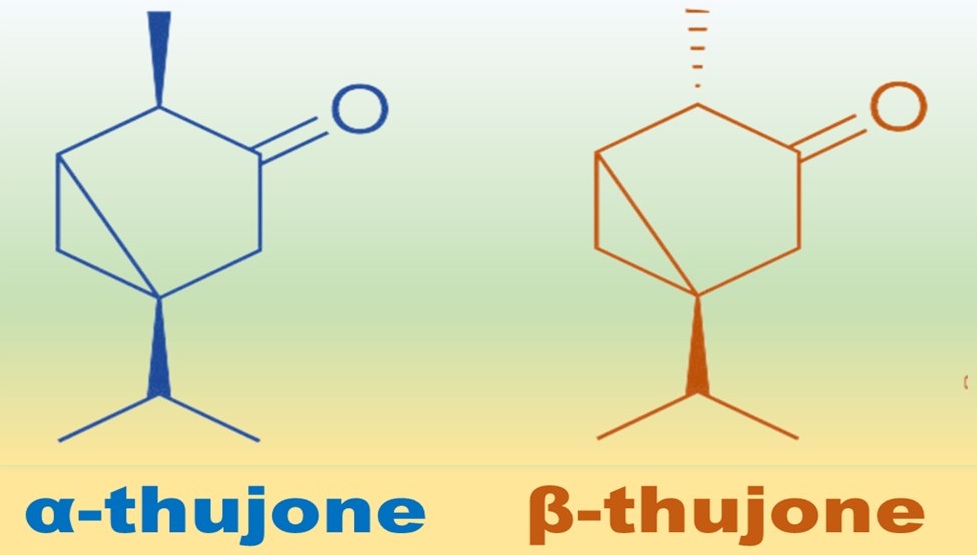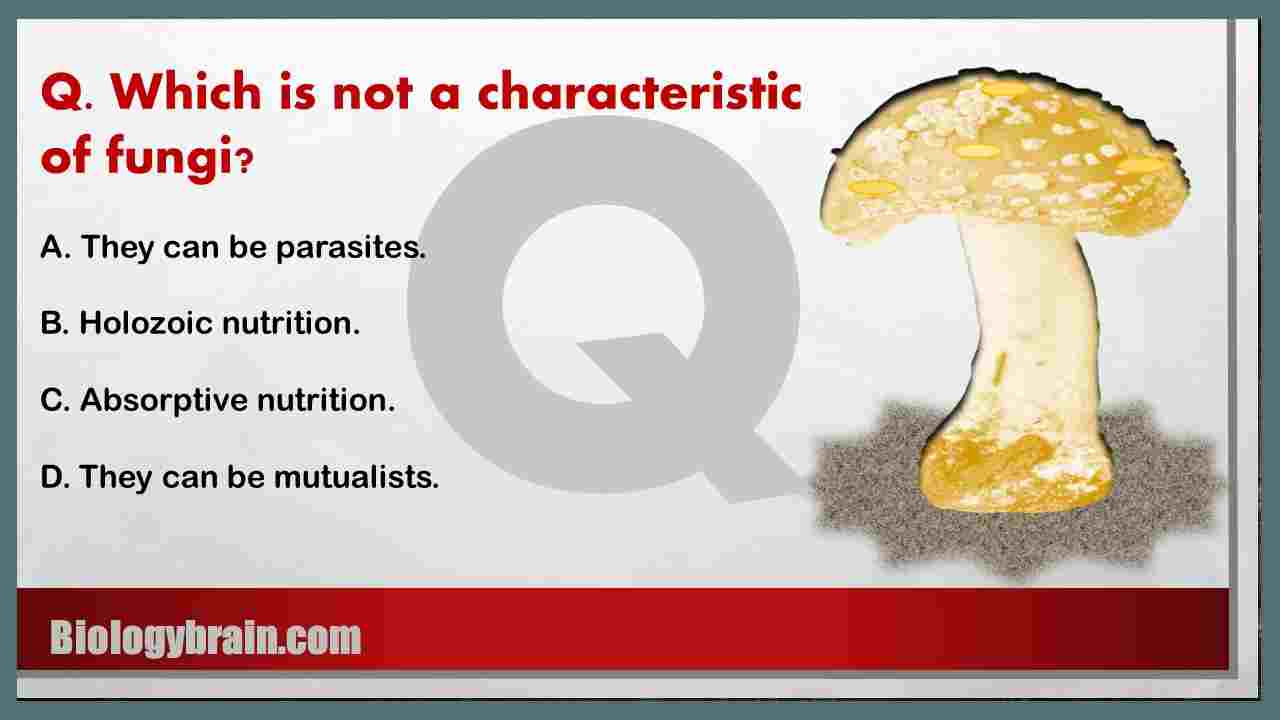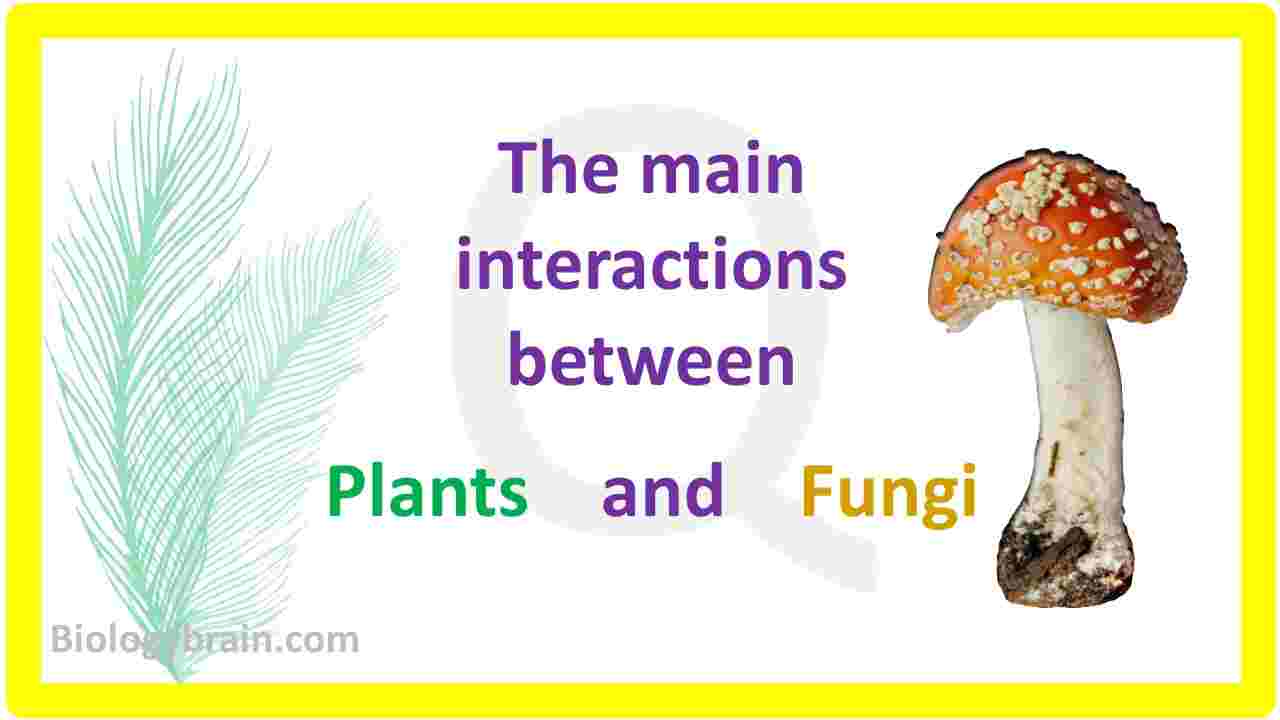Definition: Thujone is a chemical compound found in the essential oils of various herbs. As per scientific studies, thujone has been identified as a neurotoxin ingredient. Imbibition of thujone into the body cells damages the central nervous system.
Structurally, thujone is a monoterpene and exists in two forms β-thujone and α-thujone. α-thujone employs higher toxicity compared to β-thujone. It has been established that α-thujone is a modulator of the γ-aminobutyric acid (GABA) type A receptor and noncompetitively blocks the GABA-gated chloride channel.

GABA is a neurotransmitter (peptide compound) that sends chemical signals in the brain and inhibits the nervous system to provide relaxation.
What is thujone in sage, Artemesia and Thuja plants?
Thujone is commonly present in sage (Salvia officinalis), Artemesia species, and the Thuja tree. However, the given plants have desirable medicinal properties to treat various harmful diseases. Compounds of wormwood have been used from ancient Egyptian times to control gastrointestinal worms.
Thujone in absinthe liqueur and its effect
Absinthe was a popular emerald-green liqueur during the 19th and 20th centuries. Absinthe liqueur contains thujone in a significant amount. It was commonly consumed by artists and writers including Charles Baudelaire, Henri de Toulouse-Lautrec, and Vincent van Gogh.
The studies on its consumption revealed that thujone often induces fits and hallucinations and sometimes contributes to psychoses and suicides. Consumption of absinthe was banned in several countries in the 20th century due to emerging endemic health problems.
Few studies found that consumption of this liqueur is still continued legally or illicitly. The harmful nature of absinthe is mainly due to the presence of thujone in the raw material such as wormwood (Artemisia absinthium) oil, which is used in the production of beverages.
Important point
In excessive quantities, thujone exerts more toxicity and sometimes it may cause excitability, hyperactivity, delirium, and seizures.
Consumption of this liqueur not fully harmful if the content of thujone is less in the absinthe drinks. During the distillation process, the complete removal of this compound is not possible, a small amount of thujone may present in fully processed drinks. Consumption of absinthe is not a matter but consumption of a certain amount of thujone-contained absinthe drink will be considered to save the consumers from its harmful effects.
Scientific studies on thujone
Scientific studies on animals used thujone as a test compound and extensively reported that the thujone inhibits gamma-aminobutyric acid A (GABA-A) receptor resulting in excitation and convulsions in a dose-dependent manner. However, there are uncertainties about the dose requirements to cause harmful effects in humans.
The biochemist Wilfred Arnold from the University of Kansas opposed and stated that “in absinthe, alcohol is the most toxic compound,”. Moreover, he said that absinthe generally contains a thujone compound of less than ten parts per million.
Data source
- Pelkonen O, Abass K, Wiesner J. Thujone and thujone-containing herbal medicinal and botanical products: toxicological assessment. Regul Toxicol Pha. 2013 Feb;65(1):100-7. doi: 10.1016/j.yrtph.2012.11.002.
- Lachenmeier DW, Emmert J, Kuballa T, Sartor G. Thujone–cause of absinthism?. Forensic Sci Int. 2006 Apr 20;158(1):1-8.
- Lachenmeier DW. Absinthe – history of dependence to thujone or to alcohol? Fortschr Neurol Psychiatr. 2007 May;75(5):306-8.
- Lachenmeier DW, Nathan-Maister D, Breaux TA, Sohnius EM, Schoeberl K, Kuballa T. Chemical composition of vintage preban absinthe with special reference to thujone, fenchone, pinocamphone, methanol, copper, and antimony concentrations.J Agric Food Chem. 2008 May 14;56(9):3073-81. doi: 10.1021/jf703568f. Epub 2008 Apr 18.
Important questions:
Q. The alpha-helix and beta-sheet are found at which level of protein organization?
Q. Which cytoskeletal proteins provide the structural support for microvilli?
Q. Which of these does not contain a structural protein?
Q. What level of protein structure is associated with the sequence of amino acids?
Q. Which of the following pertains to typhoid fever?
Q. Which of the following tests is an agglutination test for the bacterium causing typhoid fever?
Q. This is a compound made from a group of covalently bonded atoms?
Q. If two covalently bonded atoms are identical the bond is?
Q. Which of the following are characteristics of G protein-coupled receptors (GPCR)?
Q. What are the second messengers in the GPCR-phospholipase c signal transduction system?
Q. Which of the following have a significant influence on a material’s electrical resistivity?
Q. What are alleles? And an example.
Q. What is one difference between DNA replication of bacteria and eukaryotes?
Q. Which of the following genotypes is homozygous recessive?
Q. If q = .4, what is the frequency of homozygous recessive individuals?
Q. A person who is homozygous recessive at a locus has which of the following?
Q. If cohesin was not produced or not functional what would be the effect on mitosis?
Q. Which of these is a reverse transcriptase?
Q. Which of the following functions as cell identity markers, receptors, and enzymes?
Q. Which cytoskeletal proteins provide the structural support for microvilli?










